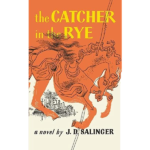Are you a fan of J.D. Salinger’s The Catcher in the Rye? Have you also read Darren Hardy’s best-selling book, The Compound Effect? If so, you may have noticed some striking differences between these two works. In this comparative analysis, we’ll explore those differences in depth.
First published in 1951, The Catcher in the Rye is a coming-of-age novel that has captivated readers for generations. Its protagonist, Holden Caulfield, is a disaffected teenager who is struggling to find his place in the world. The book is known for its vivid characterization, unique writing style, and exploration of themes like alienation, innocence, and identity.
The Compound Effect, on the other hand, is a self-help book that was first published in 2010. Written by Darren Hardy, the book is all about the power of small, consistent actions to create significant change over time. The book has been praised for its practical advice, motivational tone, and straightforward writing style.
So how do these two works compare? In this analysis, we’ll examine the themes, writing styles, and cultural impacts of both books. We’ll explore how Salinger’s novel has influenced generations of readers and writers, and how Hardy’s book has helped countless people to achieve their goals and improve their lives.
Whether you’re a literary scholar or a self-help enthusiast, this analysis will provide you with a fascinating look at two influential works. And if you’re looking to buy either book, be sure to check out ebacket.com for great deals on new and used copies!







